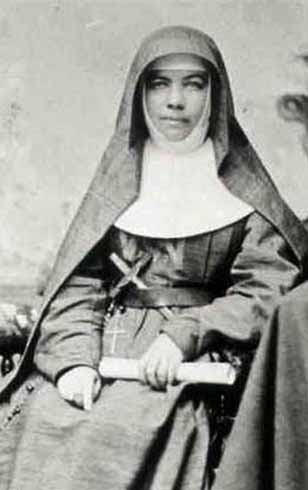 It all began in a stable, didn’t it? – and yet the journey ahead was far from stable.
It all began in a stable, didn’t it? – and yet the journey ahead was far from stable.
It began in a far outpost of an empire and it went all the way to Rome. It involved rejection by religious authorities, conflict with an allegedly dispassionate secular government, betrayal by those who should have stayed closest, physical suffering – complete sacrifice.
Involved were believers, but also unexpected alliances – with non-believers, and between male and female, rich and poor. Sometimes it confounded the wise, while it made complete sense to little children. It was revolutionary by being orthodox, far-reaching by being so powerfully centred, hated because it was born of love.
Mary Mackillop’s mission demonstrated the truth of what St Paul had said: ‘…suffering produces perseverance, perseverance character; and character, hope’ (Romans 5: 3 – 4). While her religious vision of centralised administration of far-flung communities on an enormous continent prefigured Australia’s later political federation, it was nothing new in the church – but ironically was reviled by some church leaders who feared losing local control.
Saints are the bane of mere managers. Saints see more, intend greater, out-think habit. It was Mary’s gift to be ahead of the game, and pride hates the taste of dust stirred in the wake of champions. Mary saw with unforced clarity the need for a single guiding hand across the continent. She pursued that simple requirement in the face of bishop after bishop who called for allegiance to the limits of just one diocese. She pursued it all the way to Rome, because Popes, like monarchs, feel less threatened by the little people than by the sometimes resentful aristocracy higher up the institutional ladder.
She got her way – God’s way – but at the expense of her closest ally; when she acceded to the practical notion that her order of Josephite sisters needed to own their own property rather than be forever at the mercy of those willing to lend them a home, Father Julian Tenison-Woods disowned her. Father Woods, who had nurtured Mary’s idealism from the outset, had a radical vision of total poverty – no possessions.
But Mary was that rare thing – not only an idealist, but a practising one: possession was not compromise when it brought the greatest benefit to the neediest.
This quality explains why, by the end of her Earthly life in 1909, 600 Josephite sisters in 106 communities were serving 1000 children and adults in orphanages and other charitable institutions, and 12,400 children in 117 schools (figures courtesy www.sosj.org.au) spread throughout Australia and New Zealand.
It is chiefly for her foundational work in education that St Mary of the Cross is remembered but, as someone who endured the most painful defamatory claims, constant harassment by authorities, and even excommunication by her own church, martyrdom would not seem an inappropriate badge of honour – if she ever had cared for mere honours.
The well-known ‘Catholiphobe’ Sir Henry Parkes inadvertently affirmed the power of Mary’s life work when he reportedly said, ‘The Sisters of St Joseph are like white ants; when once they enter a locality, you cannot even starve them out!’ (Sr Monica Cavanagh, Address, ‘Who will speak if you don’t?’ www.sosj.org.au). In opposition to Parkes’ bigotry, it was the stern view of the contemporary Catholic bishops that without education in faith, there is no education at all which was Mary’s greatest ally in spreading education to the poor through those ‘white ants’ in brown habits – even as some of the same bishops sternly disapproved of her way of doing things.
Time proves sainthood, but saintliness, with all its inconvenient unconventionality, is as instantly recognisable as Uluru!
St Mary of the Cross (MacKillop)
1842-1909
Feast Day: 8 August
Image: Mary Mackillop holding her life vows, 1869 – WikiCommons